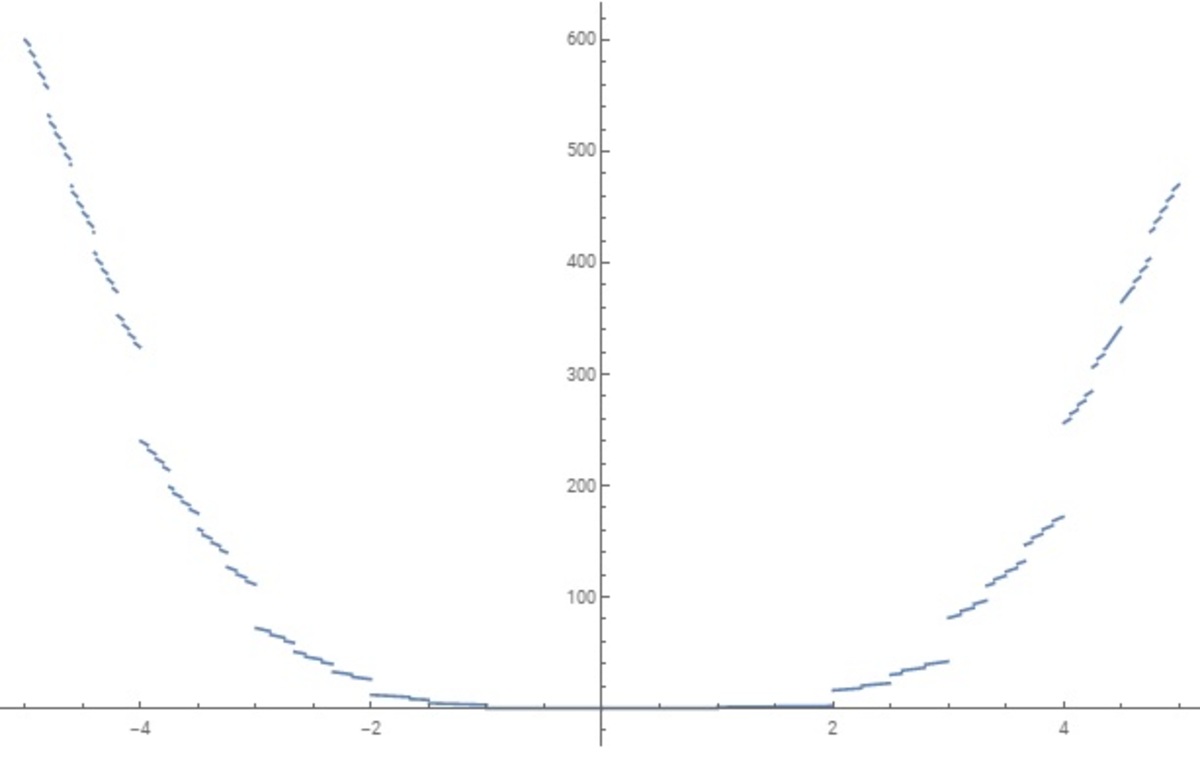Box inside Box
x ⌊ x ⌊ x ⌊ x ⌋ ⌋ ⌋ = 8 8 If x = b a is a solution to the equation above, where a and b are coprime positive integers, what is a + b ? Notation: ⌊ ⋅ ⌋ denotes the floor function .
The answer is 29.
This section requires Javascript.
You are seeing this because something didn't load right. We suggest you, (a) try
refreshing the page, (b) enabling javascript if it is disabled on your browser and,
finally, (c)
loading the
non-javascript version of this page
. We're sorry about the hassle.
1 solution
x = 3.15 also satisfy this equation.
In fact there are infinitely many solutions, check my report.
Log in to reply
I'm getting f ( 3 . 1 5 ) = 8 8 . 2 ...
3 . 1 5 ⋅ ⌊ 3 . 1 5 ⋅ ⌊ 3 . 1 5 ⋅ ⌊ 3 . 1 5 ⌋ ⌋ ⌋ = 3 . 1 5 ⋅ ⌊ 3 . 1 5 ⋅ ⌊ 3 . 1 5 ⋅ 3 ⌋ ⌋ = 3 . 1 5 ⋅ ⌊ 3 . 1 5 ⋅ ⌊ 9 . 4 5 ⌋ ⌋ = 3 . 1 5 ⋅ ⌊ 3 . 1 5 ⋅ 9 ⌋ = 3 . 1 5 ⋅ ⌊ 2 8 . 3 5 ⌋ = 3 . 1 5 ⋅ 2 8 = 8 8 . 2
Log in to reply
Arggghhhhhh, I added another floor outside of the expression.. Silly me. I'm deleting my report.
Log in to reply
@Pi Han Goh – No worries, I figured it might be that! By the way, I'm not very happy with my solution here; any ideas to avoid checking so many cases at the end?
Log in to reply
Log in to reply
@Pi Han Goh – Very nice! This seems to be an interesting function - I don't feel I have a good intuition for it yet.
Log in to reply
Log in to reply
@Mark Hennings – The number of solutions to f ( x ) = k for positive integer k looks interesting. It can be 0 , 1 or 2 ; but the sequence of k values with two solutions looks very strange; I think it begins 1 , 3 1 , 4 0 , 4 1 , 1 1 2 , 1 1 8 , … (though I'm just checking these with GeoGebra and Wolfram|Alpha at the moment)
The function f is only increasing for x ≥ 0 . It is defined for all real x . However, f ( x ) < 7 2 for all − 3 < x < 0 , f ( − 3 ) = 8 1 and f ( x ) > 1 1 1 for x < − 3 , so there are no negative solutions of f ( x ) = 8 8 .
Log in to reply
Thanks Mark, I missed that negative values of x were allowed. I've updated the solution.

First note that x can't be an integer. Now note that ⌊ x ⋅ ⌊ x ⋅ ⌊ x ⌋ ⌋ ⌋ is an integer, say n , so x = n 8 8
It's easy to see that f ( x ) = x ⋅ ⌊ x ⋅ ⌊ x ⋅ ⌊ x ⌋ ⌋ ⌋ is an increasing function*, and that f ( 3 ) = 8 1 and f ( 4 ) = 2 5 6 , so 3 < x < 4 and 2 2 < n ≤ 2 9 .
This only leaves eight possible n to check; just one value, n = 2 8 , works, so x = 2 8 8 8 = 7 2 2 and the answer is 2 9 .
Incidentally, f ( π ) = 8 7 . 9 6 … .